EAT IN ASIA / Destinations / Other destinations / Central america / Costa rica
TOP 9 Exotic Costa Rican fruits and their health benefits
Tags: COSTA RICA




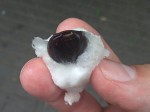
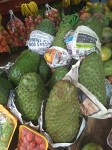

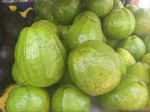


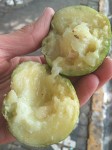
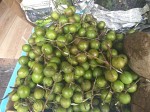




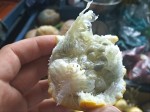
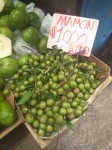

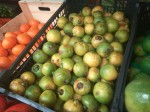
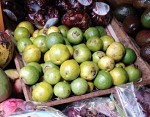
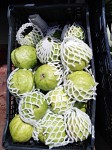




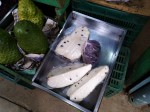
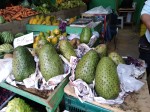




Colorful, in different shapes and sizes. Green, orange, yellow, red, violet and white – all these exotic fruits are beautiful, intriguing and full of health benefits. Although, maybe at the beginning you might not be convinced to eat them, give some time, try them a couple of times and with every next time, you will like them more and more. That is natural. If you are not accustomed to them, to their texture and taste, you might not love them from the beginning, but that is normal. Remember about their positive effects on your health, and start convincing you in that way. It is really probable, that you would love them later too. And what is important, is that a lot of them is available only in this area, so it might be, that you would not be able to get them, when you come back home. So, take advantages of your stay in Costa Rica, make something for your organism, and do not avoid them.
Here we made a list of nine the most exotic Costa Rican fruits, that you must try at least once.
TOP 9 Exotic Costa Rican fruits
1. Momoncillo
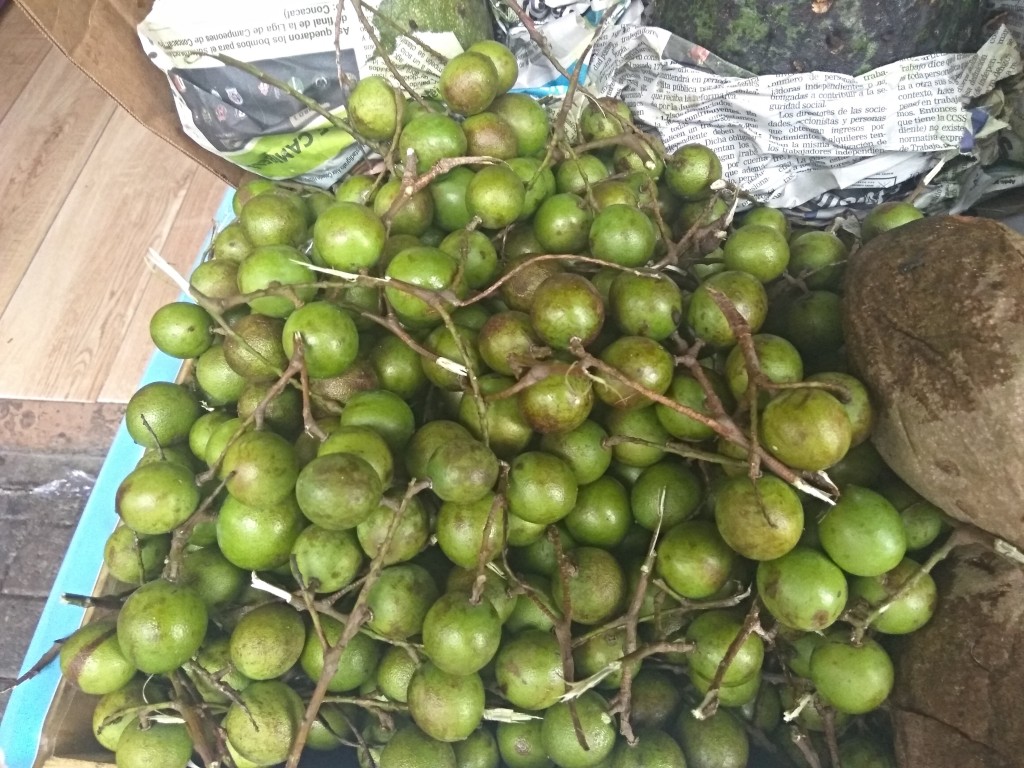
If we had to compare momoncillo to any other fruit, it would be lychee or rambutan. The flesh is soft, delicate and has an orange color. Inside the outer, thin crest is a small, round fruit with one, relatively big pit. The structure of the fruit is similar to lychee. As in the case of the last one, momoncillo has an edible only the inner part, has a sweet taste and a jelly like texture. The fruit is a small, and its diameter vary from 2 to 4 cm. The outer part is green, with some brownish spotted, however the intensity of the green color depends on the time of the year and the process of ripening.

Momoncillo is rich in vitamin A and vitamin C. Apart from these two vitamins, it has also vitamin B12. It is full also of minerals and has a significant amount of the dietary fiber. You will find in it calcium, phosphorus, iron, riboflavin, thiamine, tannins and niacin. Momoncillo is considered to be nutrient-dense fruit, with a lot of positive health effects, however, bear in mind, that it can also have a laxative effect.
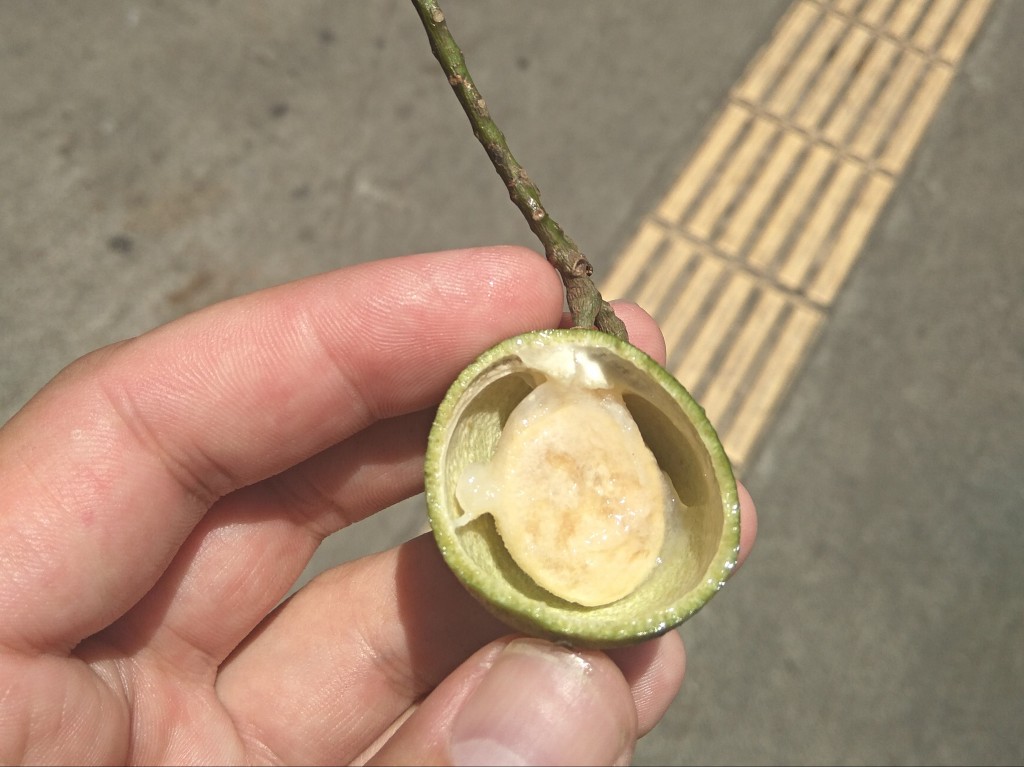
The best way to eat it, is just to take it directly form the tree, eat it raw, with no processing, no freezing and no coking. It is sweet, juicy and very delicate. Its texture is jelly like and that is partially why, it is also popular to use momoncillo in jellies, jams and desserts. However, when done at home, their preparation is a very time-consuming process. The fruit is small, with an inedible skin and pit. So, to prepare a jelly or jam, at the beginning you have to remove the outer skin, remove the pit and finally start processing the flesh. Although the final product is really good, it takes a lot of time to obtain it. The same thing is if you try to make a momoncillo juice. Keep in mind, that the juice leaves spots that are difficult to be removed from clothes, so be careful while preparing the drink or eating it.
Momoncillo flowers are very liked by hummingbirds, are full of nectars, what results in production of a dark, natural honey.
Its pulverized seed’s kernel mixed with homey is used as a remedy for a diarrhea. It is also used against intestinal parasites.
2. Lulo
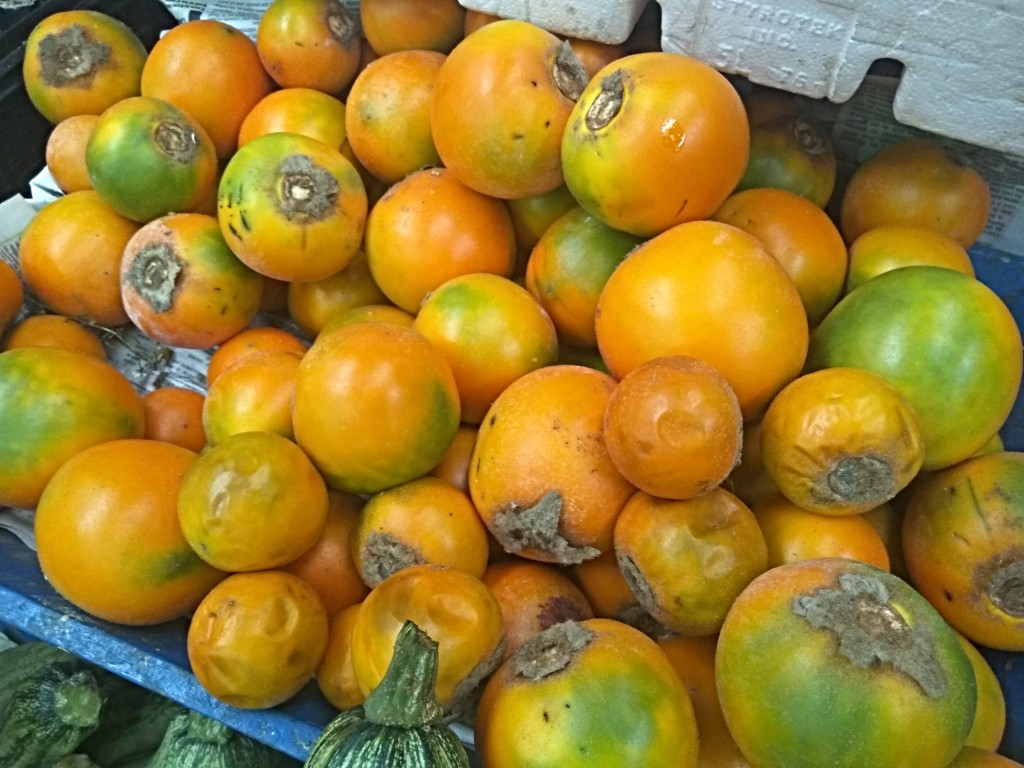
This orange, tomato like fruit is known for its benefits in the area of the production of red blood cells and in the oxidation of the body. That is because of the high content of iron, which is responsible for these mechanisms. It contains a relatively high amount of the dietary fiber, that helps in detoxifying the organism and facilitates eliminating fat, what results in decreasing the bad cholesterol in the blood. Apart from that, lulo is rich in vitamin A, vitamin C and vitamin E. Another important thing is, that lulo has a high content of calcium that helps keeping bones strong. It can have a slight diuretic effect, but at the same time, lulo is a fruit that easily quenches thirst, as its flesh is in 87% made of water.
The juice is green, jelly like and has a taste similar to lemons and pineapples, however it is very acidic. It is refreshing and hydrating.s
3. Zapote AKA Sapote
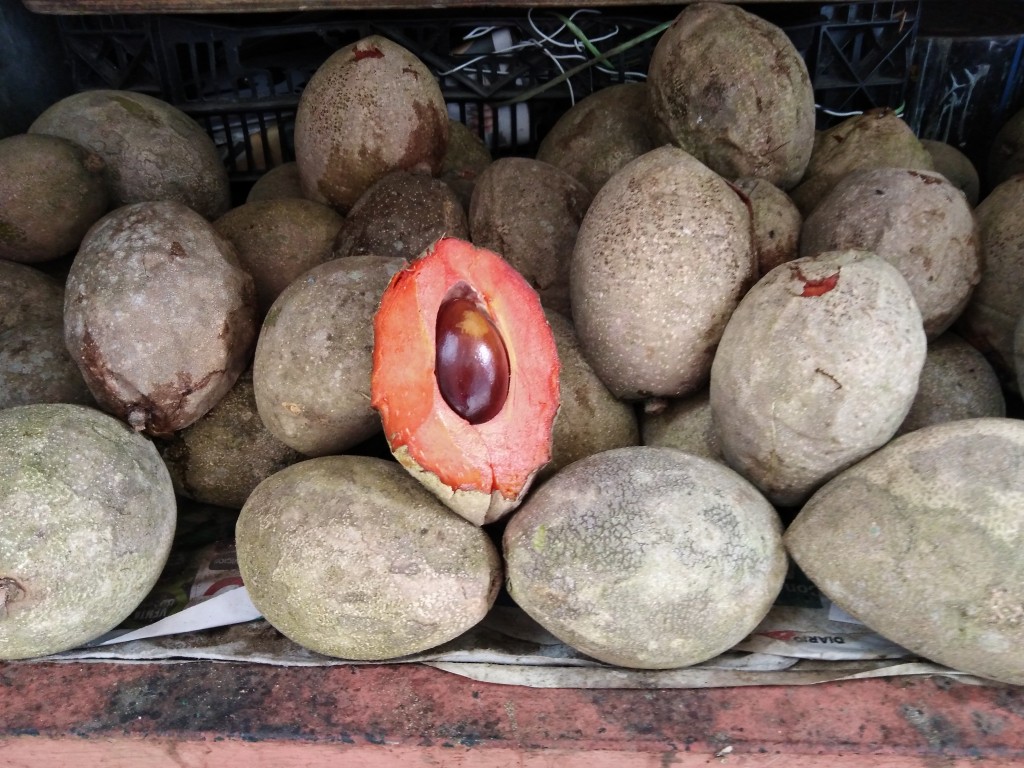
This exotic fruit has an orange flesh, a beige skin and dark pits. It is a medium size, oval-shape fruit with a fibrous, but delicate skin. The inner part – the flesh, is very soft, tasting a little bit like papaya and as in the case of the previous one, it is sweet and juicy. There is a lot of types of zapote, however these that are the most popular are red, white, yellow and black zapotes. More or less, their taste is similar, and only slight differences are to be distinguished between them.
Red zapote
Red zapote has an intense red flesh color. Its skin is rough and much more sour than the one of all other zapote types. Usually it is eaten raw, in jams, jellies and as an ingredient of smoothies, shakes and juices.
White zapote
As its name suggests, the color of the flesh is white. To be sure when the fruit is ripe, it is necessary to check it by touching it, otherwise, the color does not define the stage of the ripening process. The flesh is shiny, juicy and very sweet. Pits are relatively small and thin.
Yellow zapote
The name of that type of zapote derives from the color of its skin. The skin is very delicate, so soft and tender, that there is no need of peeling the fruit before eating.
Black zapote
Its name derives from the color it gets when the fruit is ripe. The black flesh is in the same time shiny and creamy. It is resembling a melted chocolate.

All types of zapote are a great source of vitamin A, which improves functioning of the immune system. Apart from that, zapote contains significant amounts of vitamin C and B9, that are responsible for keeping our cells in a good condition.
The fruit consists in 80% of water. That is why it is so hydrating and also having diuretic effects. What is also worth mentioning, is the fact, that 100 gr of zapote fulfills in 20% fiber requirements of the organism. Zapote is also rich in potassium, calcium and phosphorus, all of which help keeping the organism in a good health condition.
Zapote is used in arterial therapies, as a remedy for diarrhea and is known for its anti-inflammatory benefits. It also helps lowering rheumatic pains.
Apart from that, zapote is used as a hair treatment oriented on strengthening hair and giving them extra shine.
4. Caimito
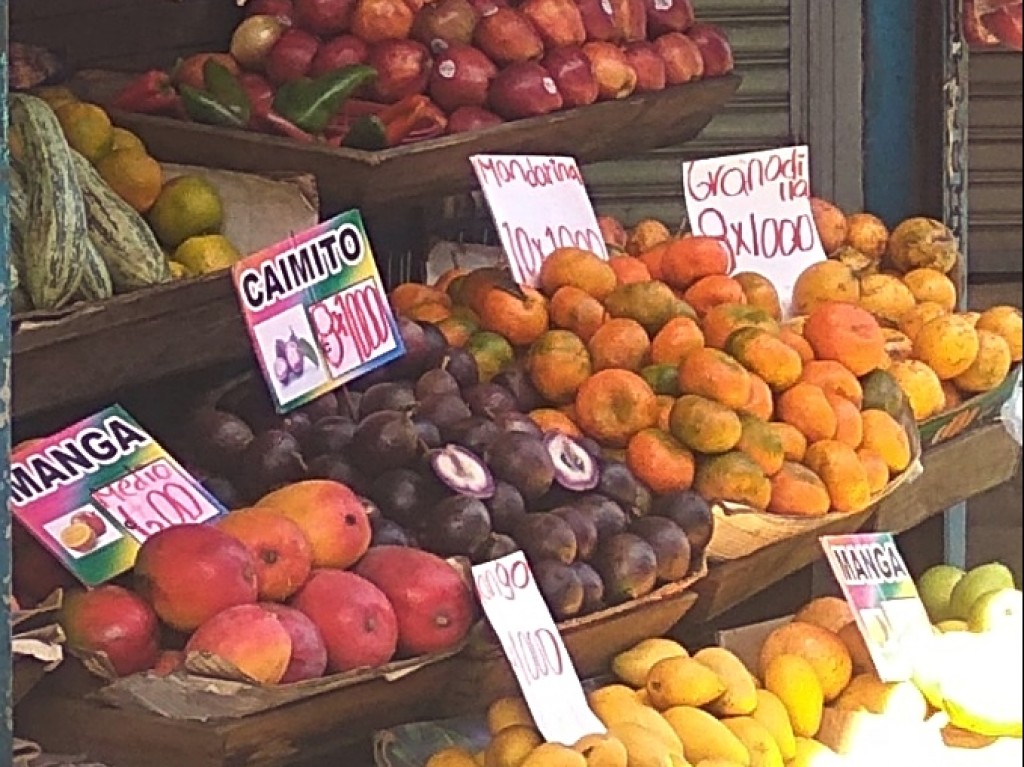
Caimito is a medium size tropical fruit, that originates from Central America and from the Caribbean Region. Its size is like the size of a medium orange. It has a dark purple and green color of the skin. The flesh can have a slightly pink or white color and it has a jelly like texture. The fruit is sweet, delicate and caramel notes can be distinguished in it. However, although sweet, caimito is at the same time refreshing.
The fruit consists of about ten parts, that encircle pits located in the center of caimito. The bests fruits can have even three pits. When cut in half, caimito has a star-like pattern, what gives its second name – star apple. Pits are inedible.
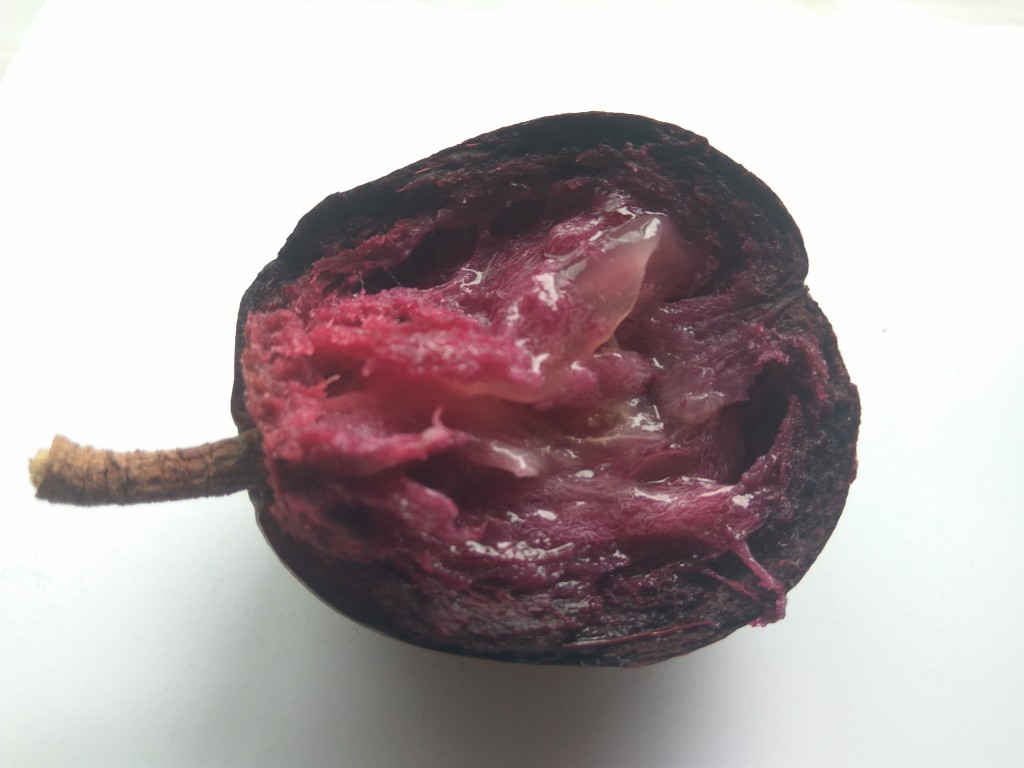
Caimito consists in about 80% - 85% of water. It is low in calories and has a significant amount of the dietary fiber, what makes it is so popular among all those being on wight-loss diets.
It is rich in vitamins such as vitamin A, C and B. It is also a good source of niacin, phosphor, calcium and iron.
Caimito is known for its benefits in anticancer and cardiovascular therapies. It helps curing diabetes disorder, hyperextension and constipation. What is more, it is recommended as a stimulant lowering a bad cholesterol level and as a premenstrual therapy.
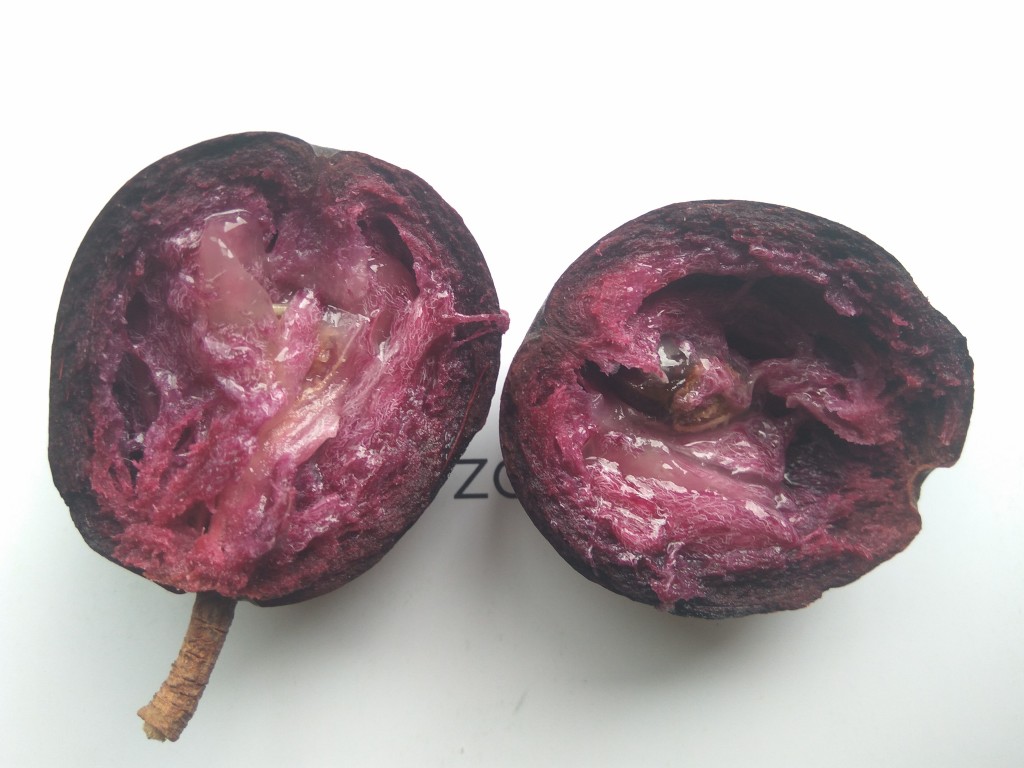
Thanks to its richness in minerals and vitamins, caimito can be used a supplement in diets oriented on the improvement of sight, memory, skin health and hair. It influences positively our immune system and in consequence has an anti-inflammatory effect.
Caimito is eaten without skin and pits. It is often eaten for a breakfast with milk, yogurt and honey, or is used as a base for ice-creams. Jamaica has its own way of serving it – caimito is mixed with an orange juice, sugar, crushed nuts and white wine. This desert is known as "strawberries and-cream".
5. Guayaba
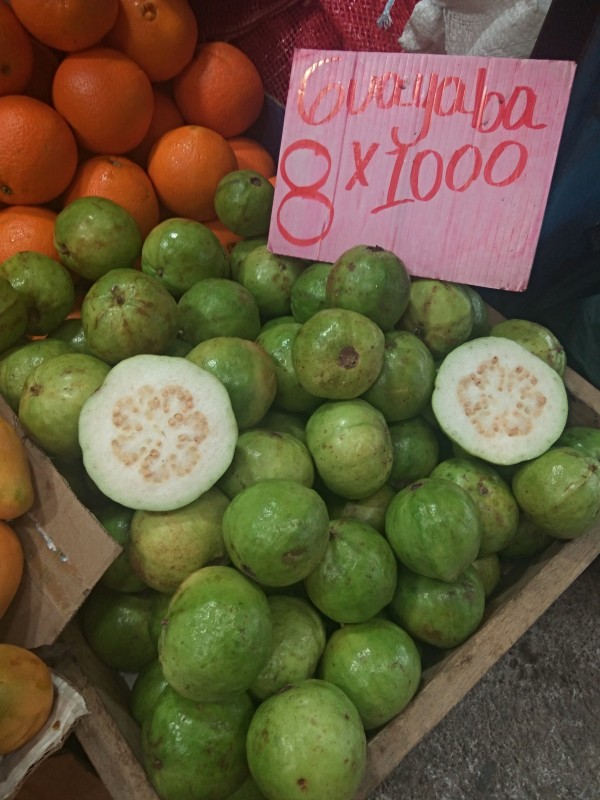
Guayaba is a tropical fruit that regarding its nutritional values, is similar to a tomato. As are tomatoes, guayaba is rich in lycopene that is known for its anticancer, anti-inflammatory ad antioxidant benefits. However, it is very important not to cook the fruit, as this process destroys lycopene.
The fruit is a medium size one, with a greenish or yellowish skin. The color of the inner part varies and can be white, yellow or pink. In the middle of the fruit, there is a lot of small, yellow seeds. When cut in half, guayaba resembles a tomato.

Guayaba is recommended for persons trying to lose weight, as it consists in majority of water. What is more, it has a lot of dietary fiber, that promotes keeping your guts in a good state. What is also interesting and might be surprising, is the fact that it contains five times more vitamin C than has an orange! Surprising, isn’t it? Apart from that, it is good to know that guayaba has a significant amount of vitamin A, that is responsible for keeping in a good condition our health, hair and skin. This vitamin also improves the general state of the organism and mobilizes the immunology system.
Eating guayabas is also good for people with cardiovascular disorders, as thanks to its high content of potassium, regulates the heartbeat, and calms nerves.
6. Cas
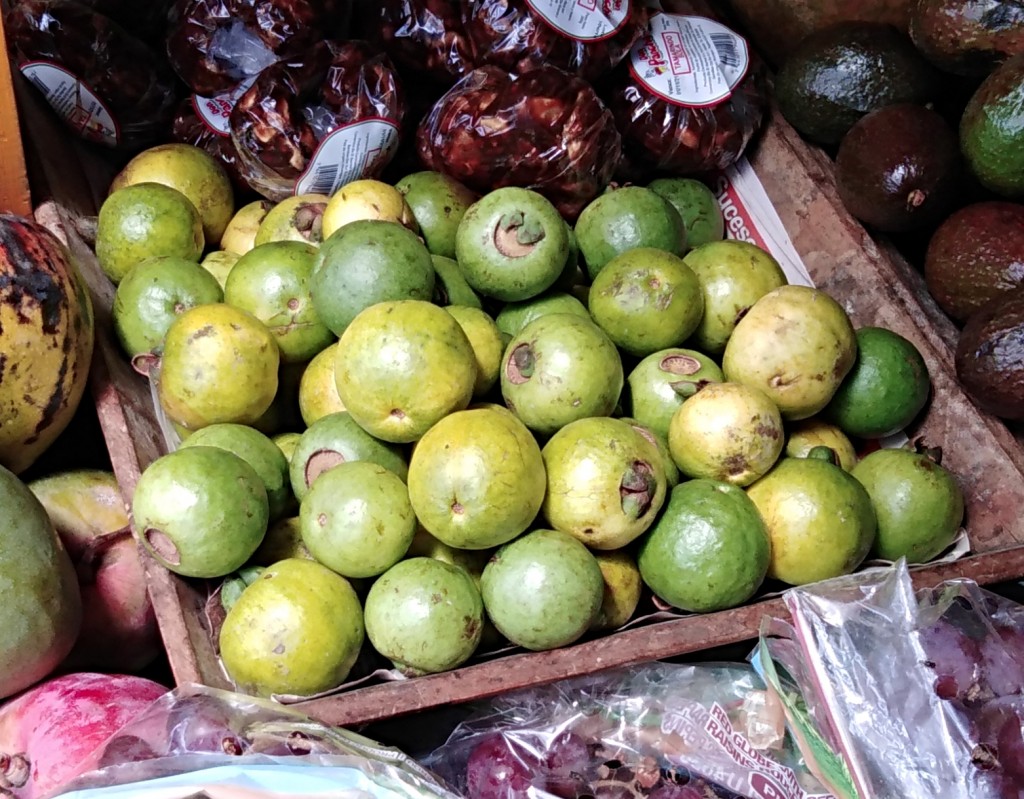
The cas fruit is of a guayaba family, and as the former one, it contains a lot of vitamin C. This round-shaped fruit has a green outer color and a yellowish flesh. It is of a size of a big plum, medium-size tomato or a big tangerine. It has a regular shape and a hard skin. The inner part of cas resembles the structure of guayaba. When cut in half, you can see, that it has a lot of small, round pits cumulated in the center of the fruit.
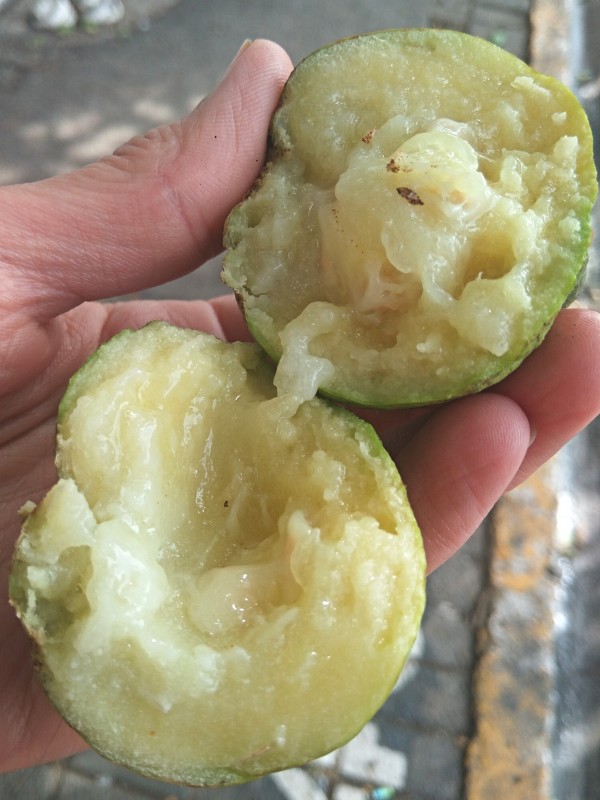
The fruit is very popular in Costa Rica, where it is used for preparing drinks, shakes and desserts. While small, hard pits are edible, before making a juice, they are often removed, just to guarantee a smoother consistency of the drink. Cas is also used in pulps, jellies and ice-creams. It is often eaten raw or as an ingredient of different salads (not only fruit salads). Most of recipes including cas combine this fruit with milk or water and sugar to reduce its sourness. It is also possible to get a cas honey, that has its unique flavor.
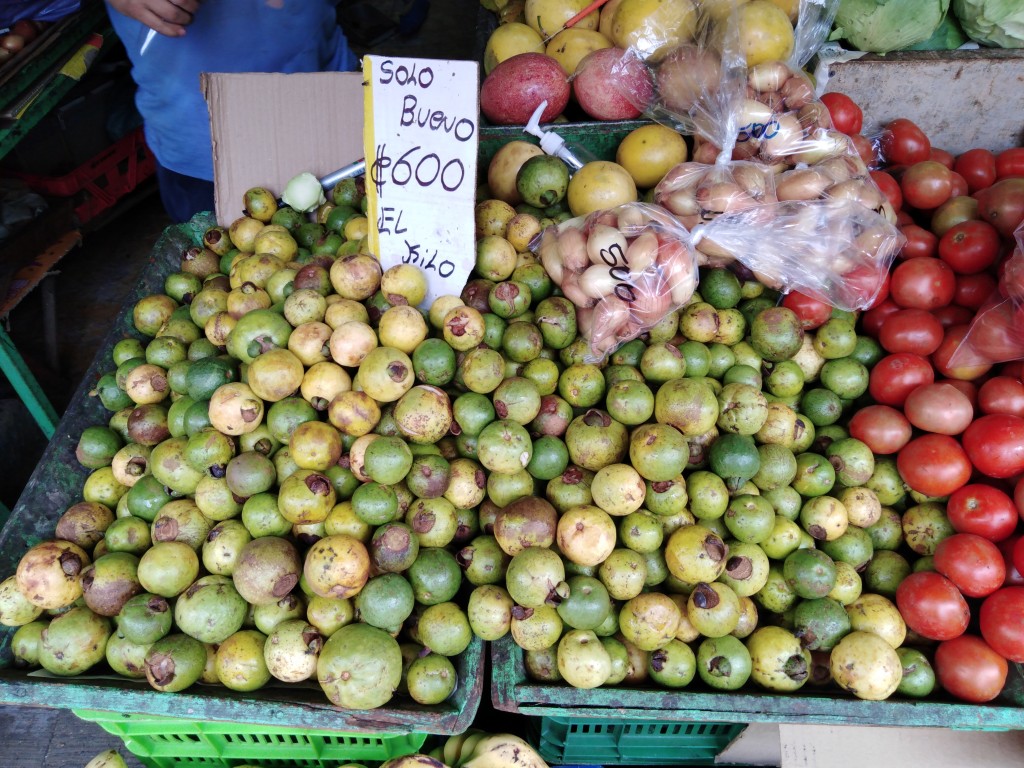
As mentioned at the beginning, cas is rich in vitamin C, which improves the detoxifying process. Moreover, cas is a good source of a dietary fiber and antioxidants. It also has a hydrating effect, as it consists in 80% of water.
7. Guama
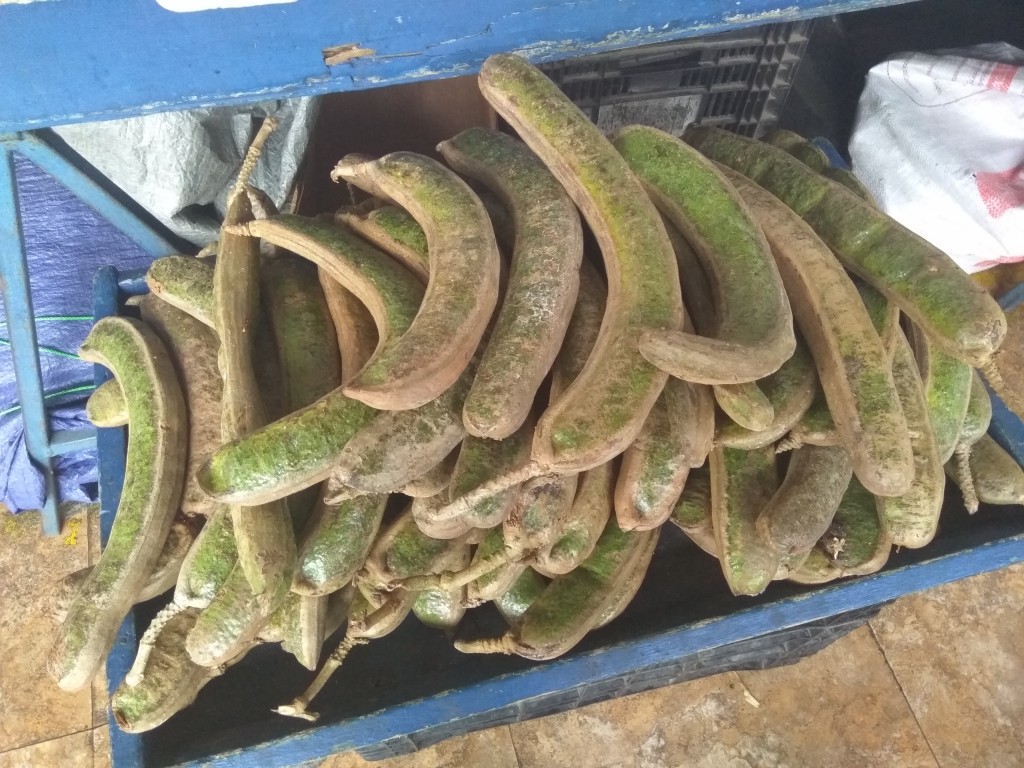
This strange, long fruit does not look at the beginning as an edible one. It has a green and brownish color, has a hard skin and inside has a lot of small, white fruits. If it had to be compared to any plant, one might say it is like a big pea pod. Guama originates from Central America, Venezuela and Colombia.
Guama trees are big and grow in tropical areas where the average temperature exceeds 20 °C. The tree can reach even 15 meters heights.
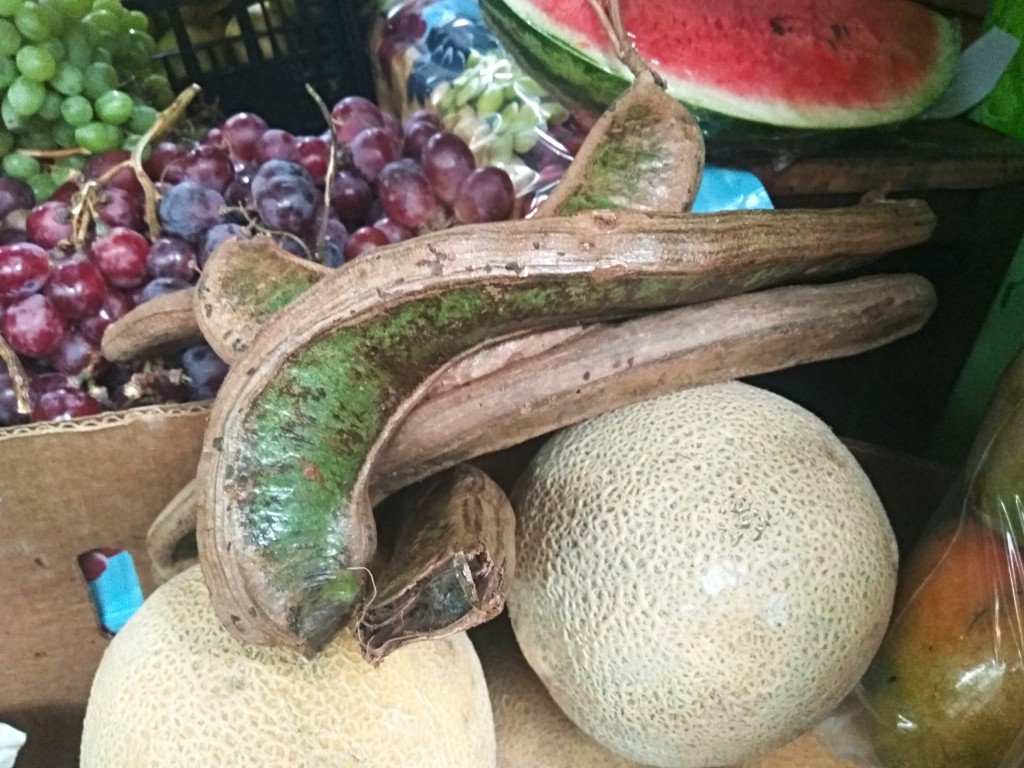
The edible part is only the inner one. The pod has to be crushed, and two halves should be separated. In this way, you will get an opened fruit with a row of smaller, white fruits inside. The white flesh is sweet and juicy. Each fruit, from the row of multiple fruits in the pod, has its own pit. The pit is long, oval-shape, has a dark-brown color and is shiny. This seed looks a little bit like a stone from the river.
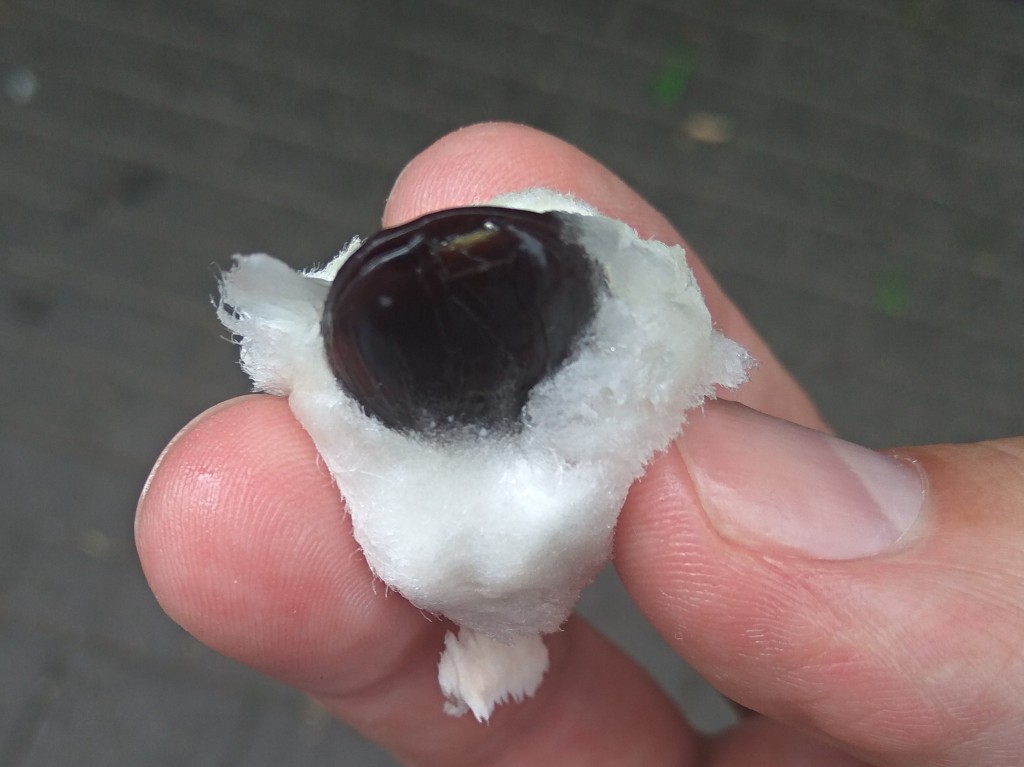
Apart from its great, sweet taste, guama is appreciated from medical point of view. It is rich in calcium, phosphor and vitamin C. that is why, guama is recommended for people with hypertension, arthritis and diabetes.
Guama is mainly eaten raw, but it is also used for preparing drinks, sorbets, sweets and desserts. Some indigenous tribes, use it also for producing a liquor that is served during their ceremonies.
The fruit is even considered by some persons to be an aphrodisiac.
8. Guanabana AKA Soursop

This South American fruit has a green skin, white flesh and big, dark pits. It is a big and heavy fruit. Its weight ranges from two to seven kilos, while the most popular fruits have about 4 kilos. Soursop’s longer diameter has twenty to thirty centimeters. It is juicy, but also at the same time, it is fibrous.
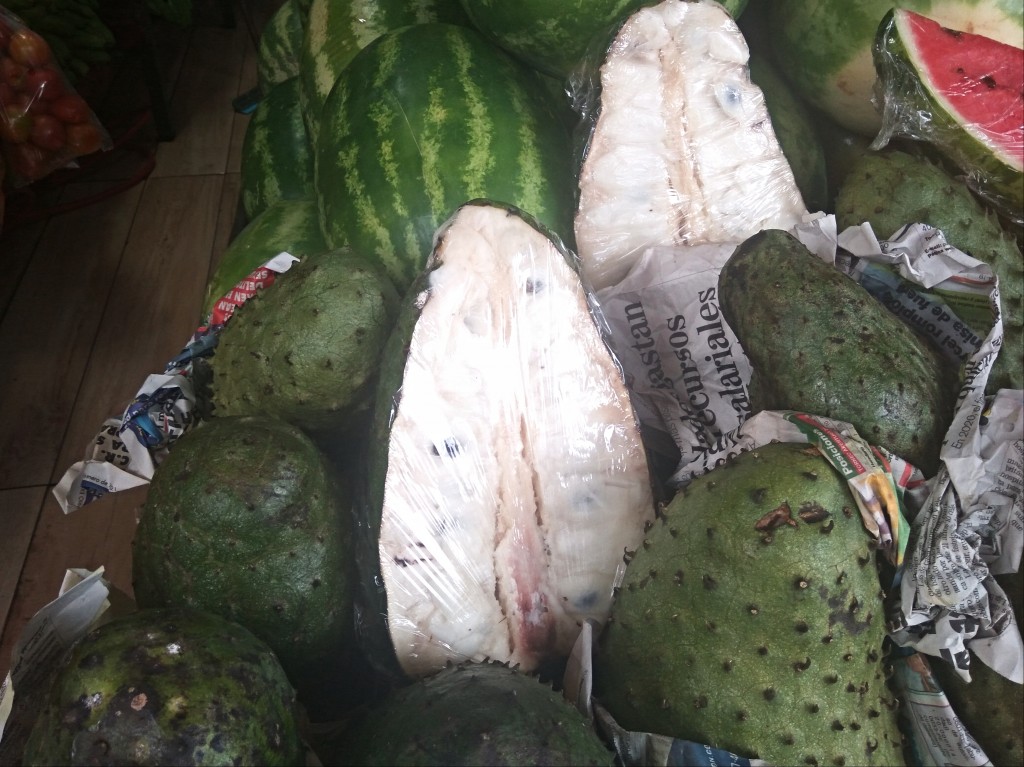
The fruit is mainly eaten raw and alone. However, it is also frequent to find in different drinks, ice-creams, jams and desserts. In some countries, guanabana is also used as a vegetable.
Soursop is rich in vitamin A and vitamin C. apart from that, guanabana, is a good source of potassium, zinc, iron, magnesium and calcium. It is also used as a remedy for guts inflammation and diarrhea.
9. Granadilla
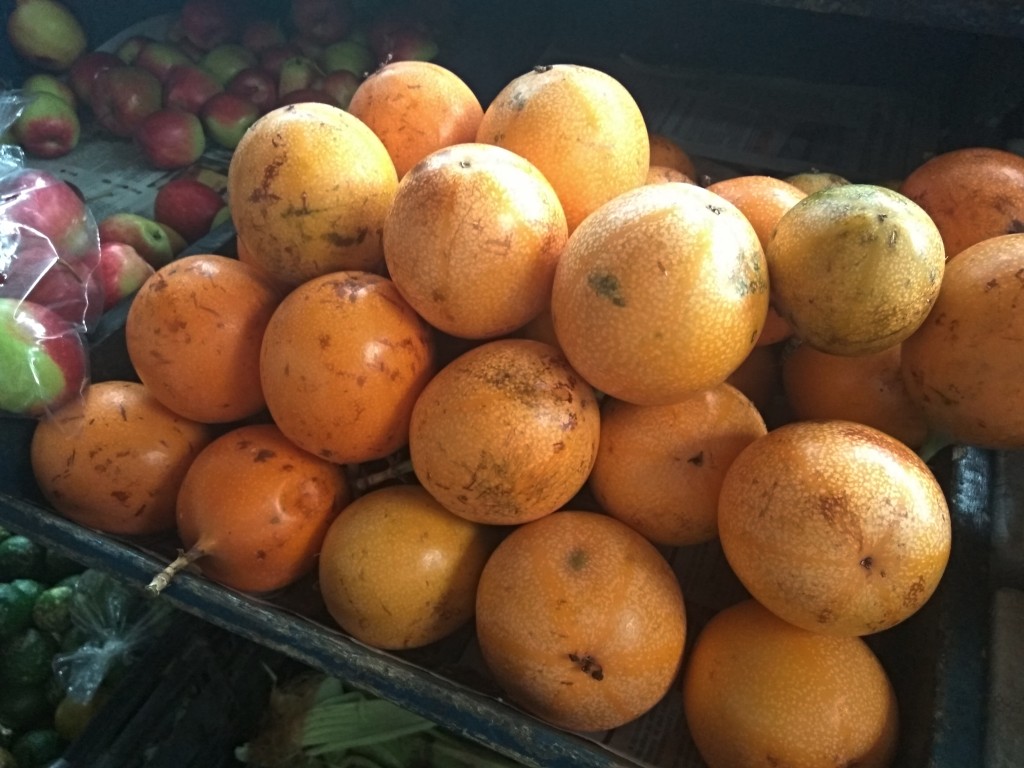
If you love passionfruit aka maracuja, granadilla might be another fruit you will love from the first try. Juicy, sweet and refreshing, what to need more in a hot climate? Granadilla looks a little bit like passion fruit, however, that is only the first impression. The fruit is medium sized, round-shaped light. The skin is orange with yellow and green hints. Inside, the inner part of the skin is white, while the flesh has a delicate, pale color ranging from white, through yellow till a little bit greenish. The fruit consists of a lot of little juicy, transparent grains with relatively big but soft dark pits. The whole inner part is edible – pits, flesh and thin encircling fibrous layers. Granadilla is usually smaller than her cousin passionfruit. Usually has about 6 cm. It is also very light – one fruit weights more or less about 120 grams.
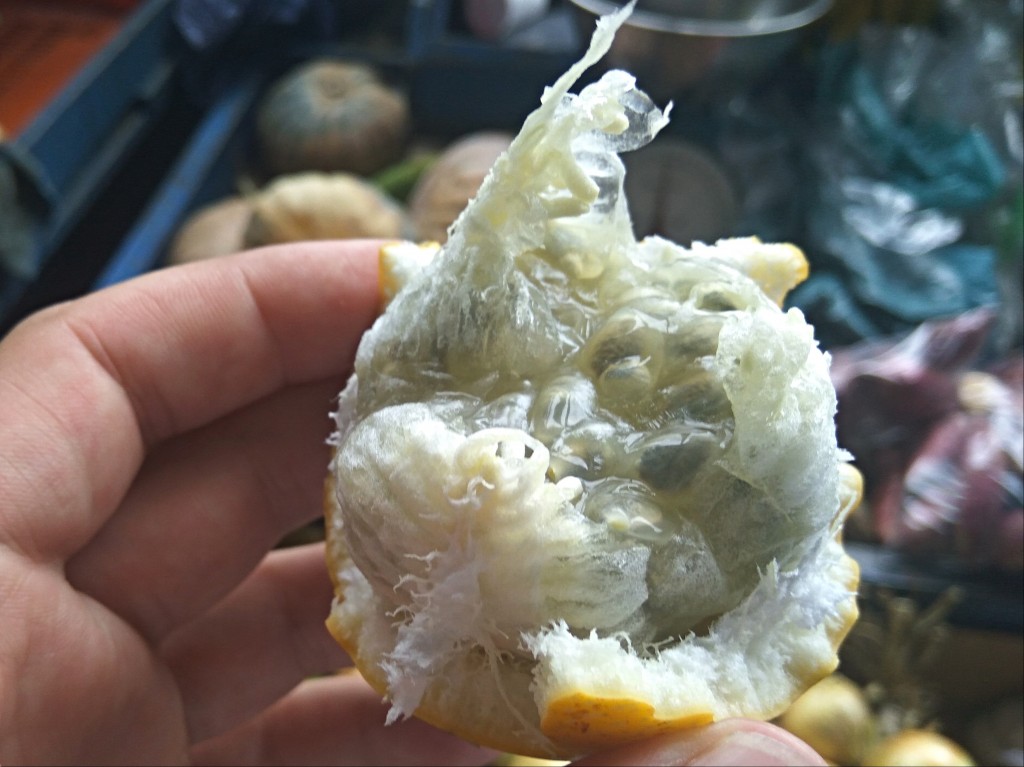
Granadilla has a very pleasant taste. It is sweet, juicy and a little bit jelly like. Usually it is eaten alone, as a raw fruit, or it is used for preparing shakes and drinks. Apart from that, it is used in different kind of sweets, desserts, ice-creams, sauces and yogurts.
To get the delicious flesh out of the fruit, just hit the upper part of the fruit with your fist or with a spoon. Do it softly, so that you do not smash it totally!
Granadilla is a great source of a lot of vitamins. The highest concentration is of the vitamin B1, B2, vitamin C and vitamin A. Apart from that, this great fruit has a lot of potassium, calcium, phosphorus, iron and dietary fiber. Granadilla is recommended for people with digestive problems and diarrhea. It is also used as a natural medicine for an irritated nervous system, as it helps to keep calm and relax.
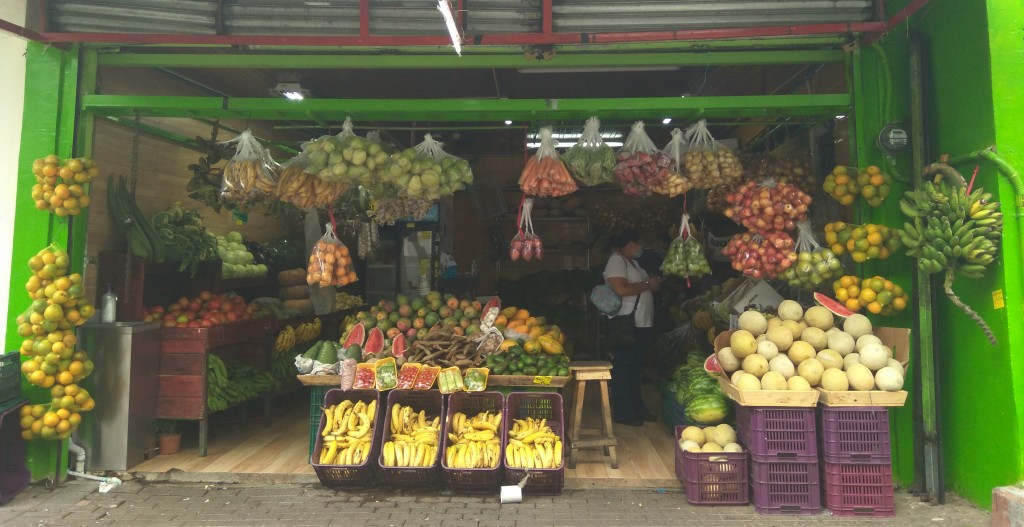
Costa Rican world of exotic fruits is really enormous. Here, we collected just a small part of it, but still, it shows how potential these plants are. Although so easily available in Costa Rica, they are very often hard to get abroad. That is why, you should eat as much of them as possible whenever you have a chance. Remember about all their positive health effects, their medical power and enjoy their delicious flesh!
If you love fruits, read more about them in the post about exotic fruits in Croatia.
Date: 2021-05-05
Author: Beti – A passionate traveler and lover of Asian cuisine, especially Thai and Japanese dishes, Bernadeta brings her culinary and cultural experiences to life in her writing. Beyond her travels, she’s an avid technology enthusiast with a deep interest in data processing, merging her love for exploration with analytical insights.
Photographer: Adalbert – An aficionado of computers and photography, Adalbert captures the essence of diverse cuisines with a discerning eye. A connoisseur of rich flavors and particularly fond of meat-based dishes, he combines his technical skills with his passion for the culinary arts in every shot.









